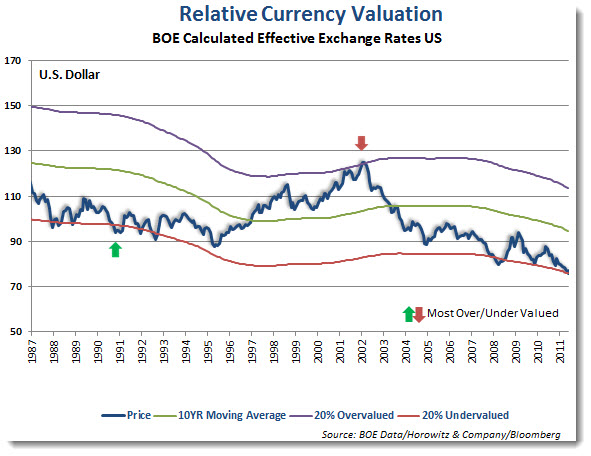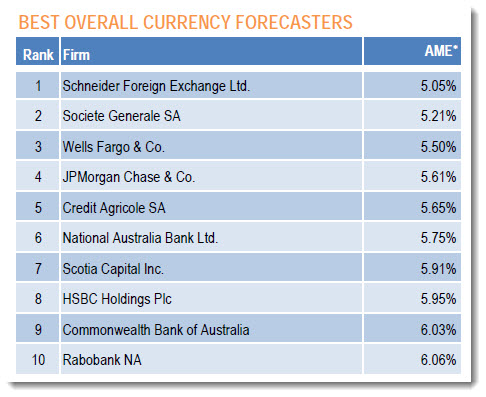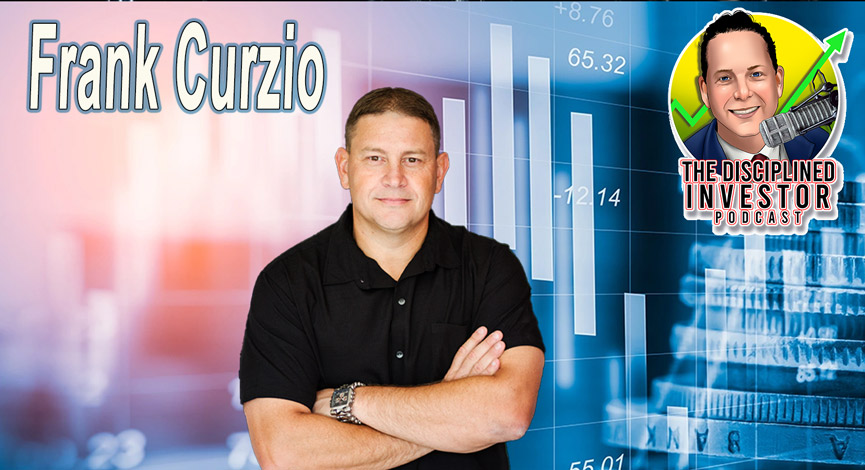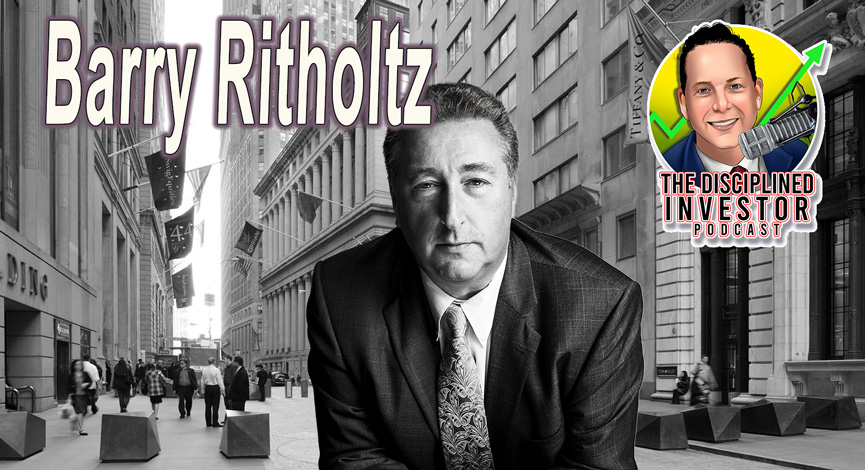By most “standard” calculations, the U.S. Dollar (USD) is undervalued by close to 20%. Using the Effective Exchange Rate methodology, the USD may be due for a rise in the near future.
However, even with the recent market slide and persistent worries over potential defaults within the EuroZone, traders have been avoiding the USD to a point where it is close to the lowest relative value that has been observed in decades.
Calculation methodology: An effective exchange rate is a measure of the value of a currency against a `basket’ of other currencies, relative to a base date. It is calculated as a weighted geometric average of the exchange rates, expressed in the form of an index. The effective exchange rate indices for sterling and other currencies published by the Bank are based on the method the IMF uses to calculate effective exchange rates for a number of industrialized countries.
The weights used are designed to measure, for an individual country, the relative importance of each of the other countries as a competitor to its manufacturing sector. The trade weights reflect aggregated trade flows in manufactured goods for the period 1989 to 1991 and cover 21 countries. The base date for the index is 1990, and is set at 100.
Now that additional QE appears to be off the table (or at least postponed for some time), gains on the USD may no longer be met with knee-jerk selling. If Bernanke and the team are discontinuing their support for a quick debasing of the currency, the safety net may have been pulled away.
There was an interesting story that appeared in Bloomberg that may provide an additional argument for the potential for the USD to rise:
The dollar is poised for its biggest monthly gain since May, reclaiming its status as a haven while Switzerland and Japan boost efforts to weaken their currencies. The U.S. currency has appreciated 1.2 percent in August against a basket of the developed world‘s nine most-traded exchange rates, according to data compiled by Bloomberg. That compares with a decline of 14 percent in the world‘s reserve currency from this time last year through July.
Demand for America‘s assets is rising even though the Federal Reserve has pledged to keep its benchmark interest rate near zero through mid-2013 and Standard & Poor‘s cut the nation‘s credit rating from AAA. The two other currencies considered havens in times of financial and political strife — the Swiss franc and yen — are under siege by their governments and central banks after rising to records.
“The dollar is a buy through the end of the third quarter,” Nick Bennenbroek, head of currency strategy in New York at Wells Fargo & Co., the third-most accurate forecaster in the last six quarters as measured by Bloomberg, said in an Aug.
Currency forecast survey by Bloomberg:


















